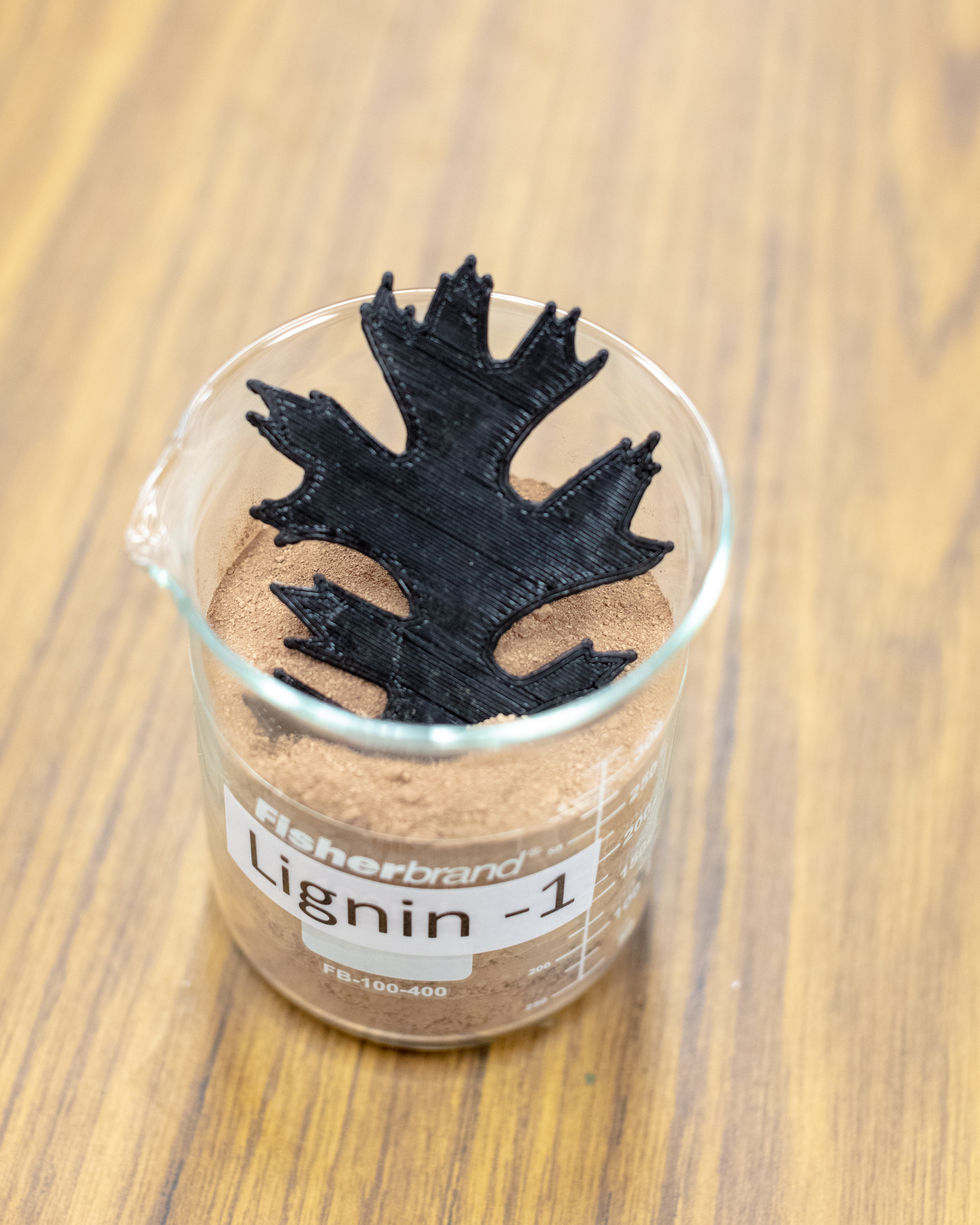
Scientists at the Department of Energy’s Oak Ridge National Laboratory (ORNL) in the US have developed a renewable 3D printing feedstock which uses lignin.
Lignin is the material left over from the processing of biomass. It gives plants rigidity and makes biomass resistant to being broken down into useful products. Therefore, finding new uses for it could improve the economics of the biorefining process, the scientists say.
The project involved combining a melt-stable hardwood lignin with plastic, a low-melting nylon, and carbon fiber to create a composite with the right characteristics for extrusion and weld strength between layers during the printing process, as well as improved mechanical properties.
Lignin can only be heated to a certain temperature for softening and extrusion from a 3D printing nozzle since prolonged exposure to heat dramatically increases its viscosity, so that it becomes too thick to be extruded easily, the ORNL researchers noted. However, when they combined lignin with nylon, the composite’s room temperature stiffness increased while its melt viscosity decreased. The lignin-nylon material had tensile strength similar to nylon alone and reportedly lower viscosity than conventional acrylonitrile butadiene styrene (ABS) or high impact polystyrene.
At the molecular level, the scientists found that the combination of lignin and nylon appeared to have almost a lubrication or plasticizing effect on the composite. They were also able to mix in a higher percentage of lignin up to 40-50% by weight, along with 4-16% carbon fiber. The new composite heats up more easily, flows faster for speedier printing, and results in a stronger product, they claim.
The lignin-nylon composite is patent-pending and work is ongoing to refine the material and find other ways to process it.
This story is reprinted from material from ORNL, with editorial changes made by Materials Today. The views expressed in this article do not necessarily represent those of Elsevier.





